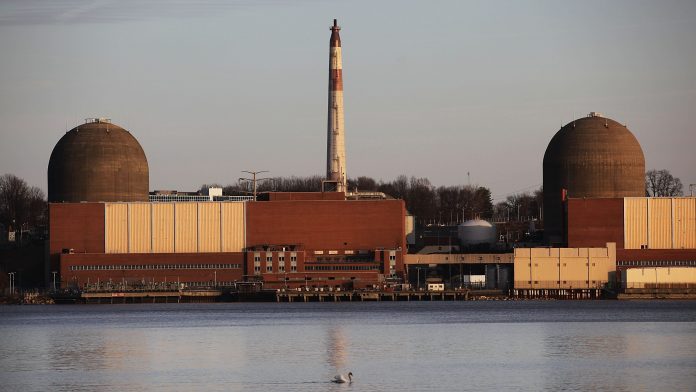Gov. Kathy Hochul wants to build a new nuclear power plant in upstate New York. Planned to add one gigawatt of power to the grid, if completed, it will be the first major nuclear power plant built in the state in more than three decades.
“We must embrace an energy policy of abundance,” Hochul said in a press release. The plant will be necessary as the state looks to electrify more industries, attract new manufacturing and “deactivates aging fossil fuel power generation.”
Hochul added that the power plant will be operated by the public New York Power Authority and is expected to generate 1,600 construction jobs and 1,200 permanent positions.
New York’s endeavor joins a growing resurgence of nuclear power across the United States, driven by technological advancements, surging demand for electricity and environmental goals that require zero-emission electricity sources.
How much nuclear power does New York currently generate?
New York currently operates three nuclear plants along Lake Ontario that produce about 3.3 gigawatts of electricity – roughly 20% of the state’s total power supply. The proposed one-gigawatt plant would increase the state’s nuclear capacity to approximately 4.3 gigawatts.
At its peak, nuclear power provided about 5.4 gigawatts, or roughly one-third of the state’s electricity, but in 2021, former Gov. Andrew Cuomo successfully pushed to decommission the two-gigawatt Indian Point nuclear plant, which lies less than 50 miles up the Hudson River from Lower Manhattan. That closure significantly reduced the state’s nuclear capacity.
Hochul, who was lieutenant governor at the time, has since criticized Cuomo for lacking a sustainable replacement plan. The closure forced New York to rely more on gas, which provided 46% of the state’s electricity in 2023. The state’s grid operator also postponed plans to close older gas-burning power plants to avoid blackouts.
Why are nuclear power plants trending?
The nuclear announcement comes amid a nationwide revival of interest in atomic energy, driven primarily by the electricity demands of artificial intelligence data centers and considerable investments from technology companies.
Amazon, Google, Microsoft and Meta have all signed nuclear power deals in the past year. In early June, Meta agreed to a 20-year contract with Constellation Energy to keep an Illinois nuclear plant running through 2047. Unlike wind and solar, nuclear power can provide a stable supply of electricity around the clock, making it an attractive option for tech companies and states like New York that also want to meet goals for generating electricity from zero-emission sources.
President Donald Trump is also interested in expanding U.S. energy generation. He has signed executive orders aimed at speeding nuclear development by streamlining federal regulatory approval. Hochul said she has pressed Trump to make the Nuclear Regulatory Commission more efficient so permits can be obtained more quickly, according to the New York Times.
Many questions remain
In the initial announcement, Hochul provided few concrete details about the nuclear project. Potential sites include existing nuclear facilities, such as Nine Mile Point in Oswego, where Constellation has already sought federal funding for advanced reactors.
Hochul did not specify whether the state would construct one large reactor or build several small modular reactors. The governor’s office also did not announce any private partners that would be contracted to build the project or a timeline for the next steps. Hochul did not provide a date by which she wants the power plant to begin operation. Recent nuclear power plants in the U.S. have taken 10-15 years to come online.
The biggest unknown is cost. Recently, in Georgia, nuclear reactors that came online in the past two years cost $35 billion, twice the initial estimate. The governor’s announcement indicated that a mix of public and private funds would be used to build the power plant.
State Sen. Liz Krueger, a Manhattan Democrat, questioned whether nuclear represents “the most cost-effective use of our clean energy dollars,” she told the New York Times, and raised concerns about radioactive waste disposal.

